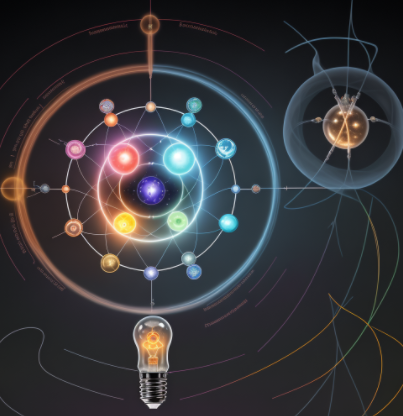Introduction
Have you ever wondered how your smartphone battery converts chemical energy into electrical power, or how solar panels transform sunlight into usable electricity? Energy conversion devices are the unsung heroes of our modern world, silently working to transform one form of energy into another to power our daily lives.
Energy conversion devices have been fundamental to human technological advancement, from the earliest steam engines to cutting-edge quantum devices. As we face growing energy challenges in the 21st century, understanding these devices becomes increasingly crucial for developing sustainable solutions.
Thesis: Energy conversion devices play a vital role in modern society by transforming various forms of energy into more useful forms, enabling technological advancement while addressing environmental concerns through improved efficiency and sustainable alternatives.
Fundamental Principles of Energy Conversion
The Science Behind Energy Transformation
Energy conversion follows the fundamental laws of thermodynamics, which govern how energy can be transformed from one form to another. The first law of thermodynamics states that energy cannot be created or destroyed, only converted from one form to another.
The efficiency of energy conversion devices is limited by the second law of thermodynamics, which indicates that some energy is always lost as heat during the conversion process. Engineers and scientists work continuously to minimize these losses and improve device efficiency.
Types of Energy Conversion
Different devices specialize in converting specific forms of energy:
- Mechanical to electrical (generators)
- Chemical to electrical (batteries)
- Light to electrical (solar cells)
- Heat to mechanical (heat engines)
- Electrical to mechanical (motors)
Common Energy Conversion Devices
Electrical Generators and Motors
Generators convert mechanical energy into electrical energy through electromagnetic induction. This principle is demonstrated in hydroelectric dams, wind turbines, and conventional power plants.
Electric motors operate on the reverse principle, converting electrical energy into mechanical energy. They are found in everything from electric vehicles to household appliances, making them one of the most ubiquitous energy conversion devices.
Solar and Photovoltaic Devices
Solar cells use the photoelectric effect to convert light energy directly into electrical energy. Modern photovoltaic technology has evolved from simple silicon cells to advanced multi-junction cells with significantly higher efficiency rates.
Recent developments in perovskite solar cells and organic photovoltaics promise even greater efficiency and lower production costs, potentially revolutionizing solar energy conversion.
Emerging Technologies and Future Developments
Advanced Energy Storage Systems
Modern batteries and supercapacitors represent crucial energy conversion and storage technologies. Lithium-ion batteries, currently dominating the market, continue to evolve with new chemistries and architectures.
Emerging technologies like solid-state batteries and flow batteries promise higher energy density, faster charging times, and improved safety, potentially transforming everything from mobile devices to grid-scale energy storage.
Quantum Energy Conversion Devices
Cutting-edge research explores quantum effects for energy conversion, including:
- Quantum heat engines
- Thermoelectric quantum dots
- Quantum photovoltaic devices
These technologies could potentially achieve efficiency levels approaching theoretical limits, though many remain in early development stages.
Resources for Educators and Students
Understanding energy conversion devices is crucial for students and educators in STEM fields. Comprehensive Guide and Activities for Understanding Energy Conversion Devices
Conclusion
Energy conversion devices form the backbone of our modern technological society, enabling the transformation of various energy forms to meet our needs. As we continue to face environmental challenges and growing energy demands, the development of more efficient and sustainable energy conversion devices becomes increasingly critical.
The future of energy conversion technology holds tremendous promise, from quantum devices to advanced storage systems. By understanding these technologies and continuing to innovate, we can work toward a more sustainable and energy-efficient future.
Final Thoughts: As we move forward, the evolution of energy conversion devices will play a crucial role in addressing global energy challenges. Understanding these technologies empowers us to make informed decisions about energy use and contribute to developing sustainable solutions for future generations.

